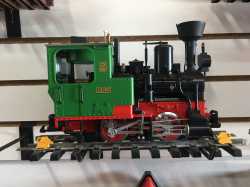>>10539257What gauge do you want? That might clear up some of your needs, since some smaller gauges (OO, HO, TT120, N, Z and T, namely) need a table to be run on, while others (G and O gauge) can be run on the floor or even outside.
Usually train sets are seen as good starting points.
If you do not want a train set, since they can be a bit of a crap shoot, then you need to select your own power pack and track. The power pack will depend on whether you want to run DC or DCC, DC is standard current regulated power, whereas DCC has a computer chip which aids in power along with current. Track comes in three varieties: Nickel Silver, Brass and Steel. I listed these in order from best to worst, but as a beginner, I would go for brass, despite needing more maintenance than Nickel Silver, it is significantly cheaper.
Of course, you need the locomotive and rolling stock too, do your homework for each of these, since no two releases, even of the same model by the same manufacturer will be exactly the same. The same applies for rolling stock.
As a side note, you should also have a pack of cotton swabs or cotton balls, rubbing alcohol (preferably 90% or higher, but 70% is fit for purpose) and a polishing compound. You will need to clean and polish your track periodically. My preferred polishing compound is Flitz, which is a multipurpose polishing compound intended to be used on things like metal contacts, which all active rails are.

